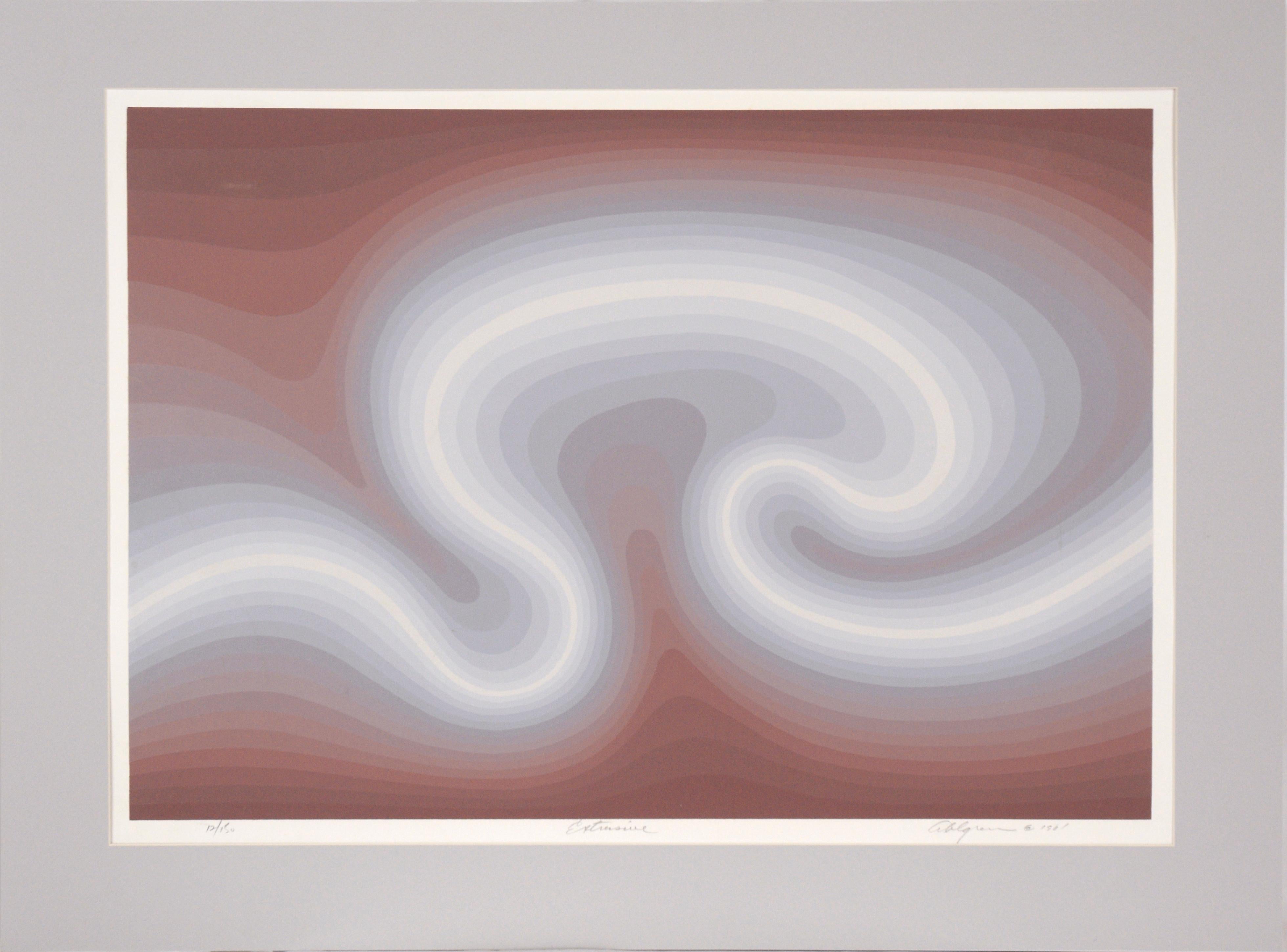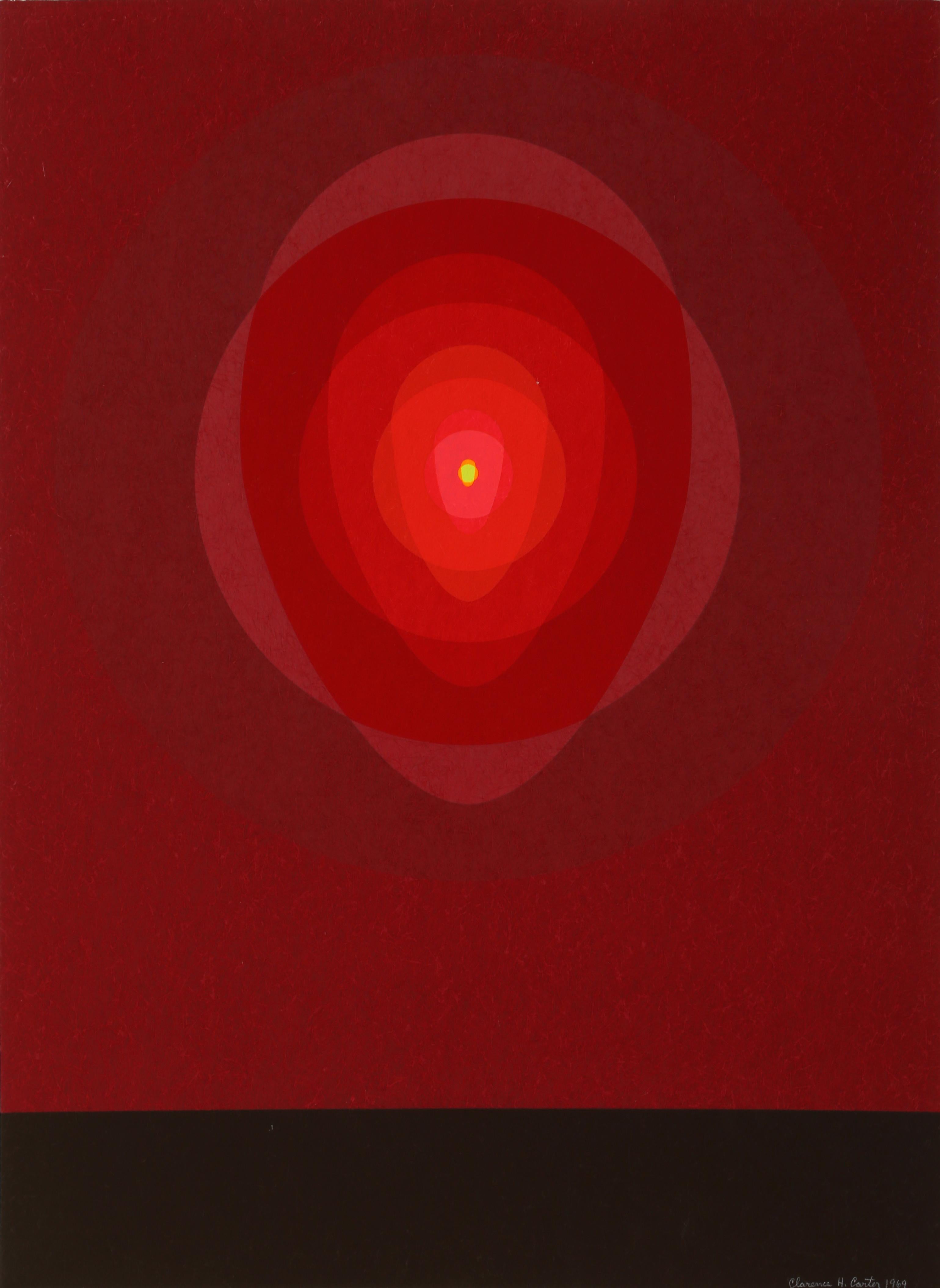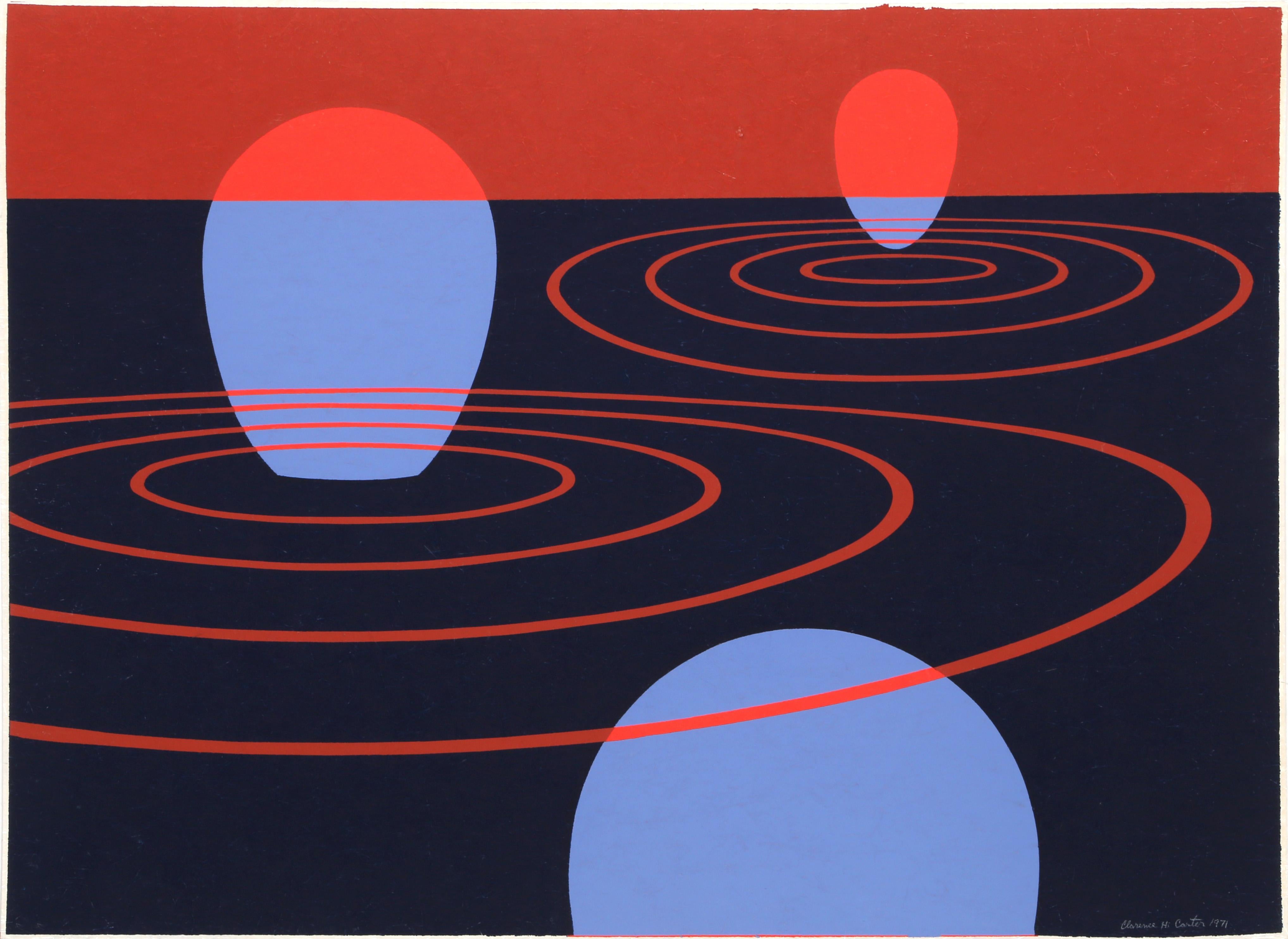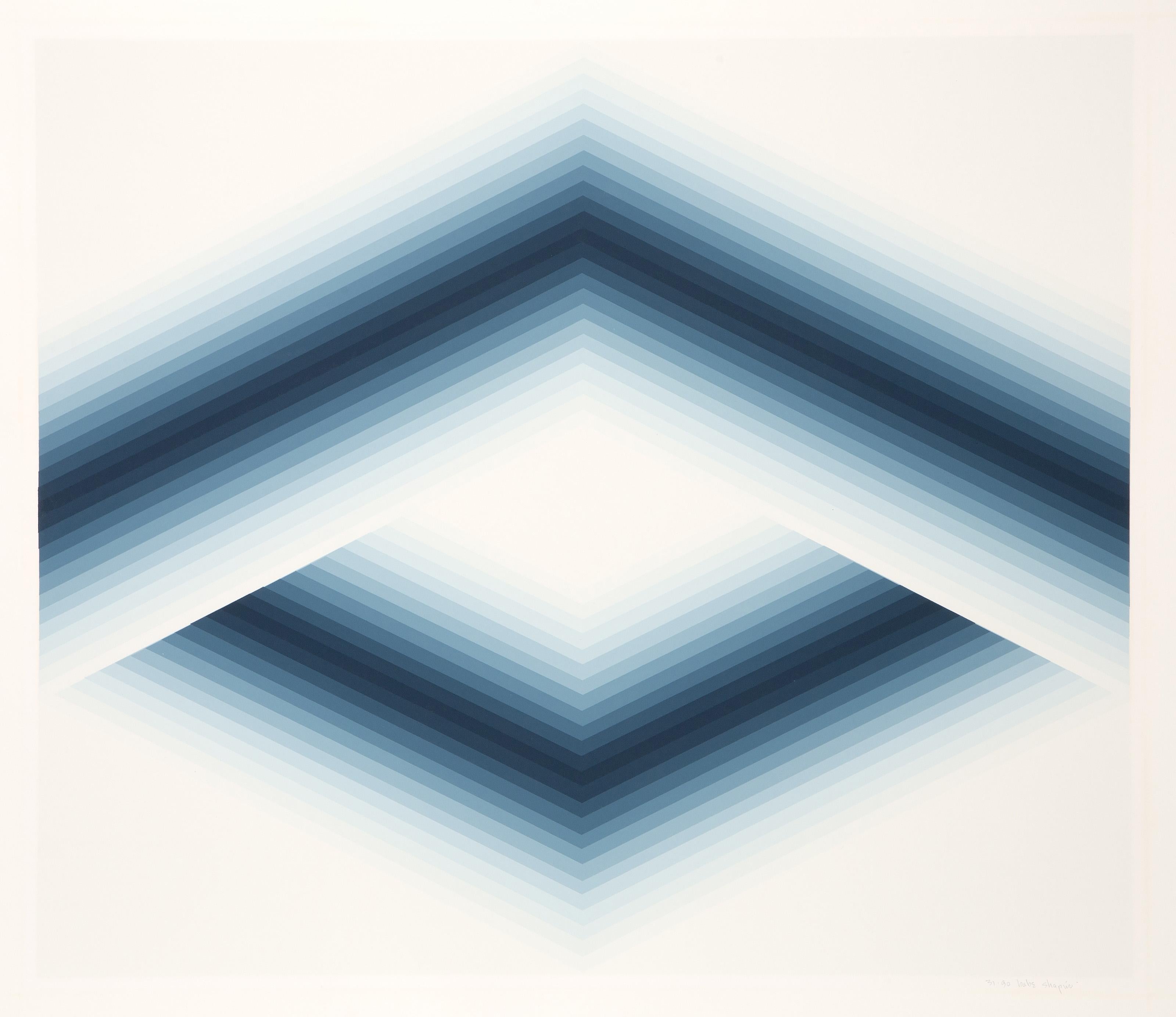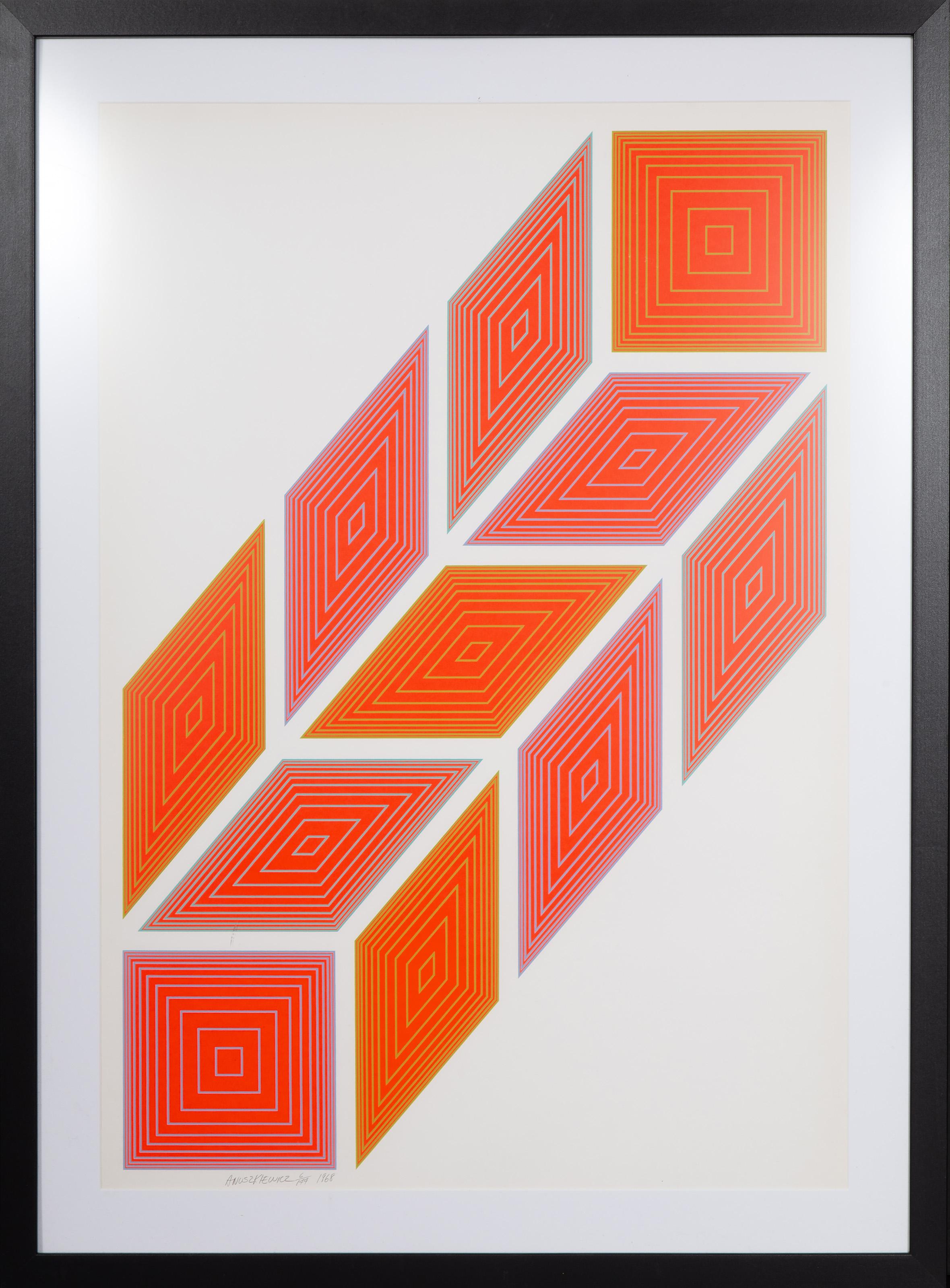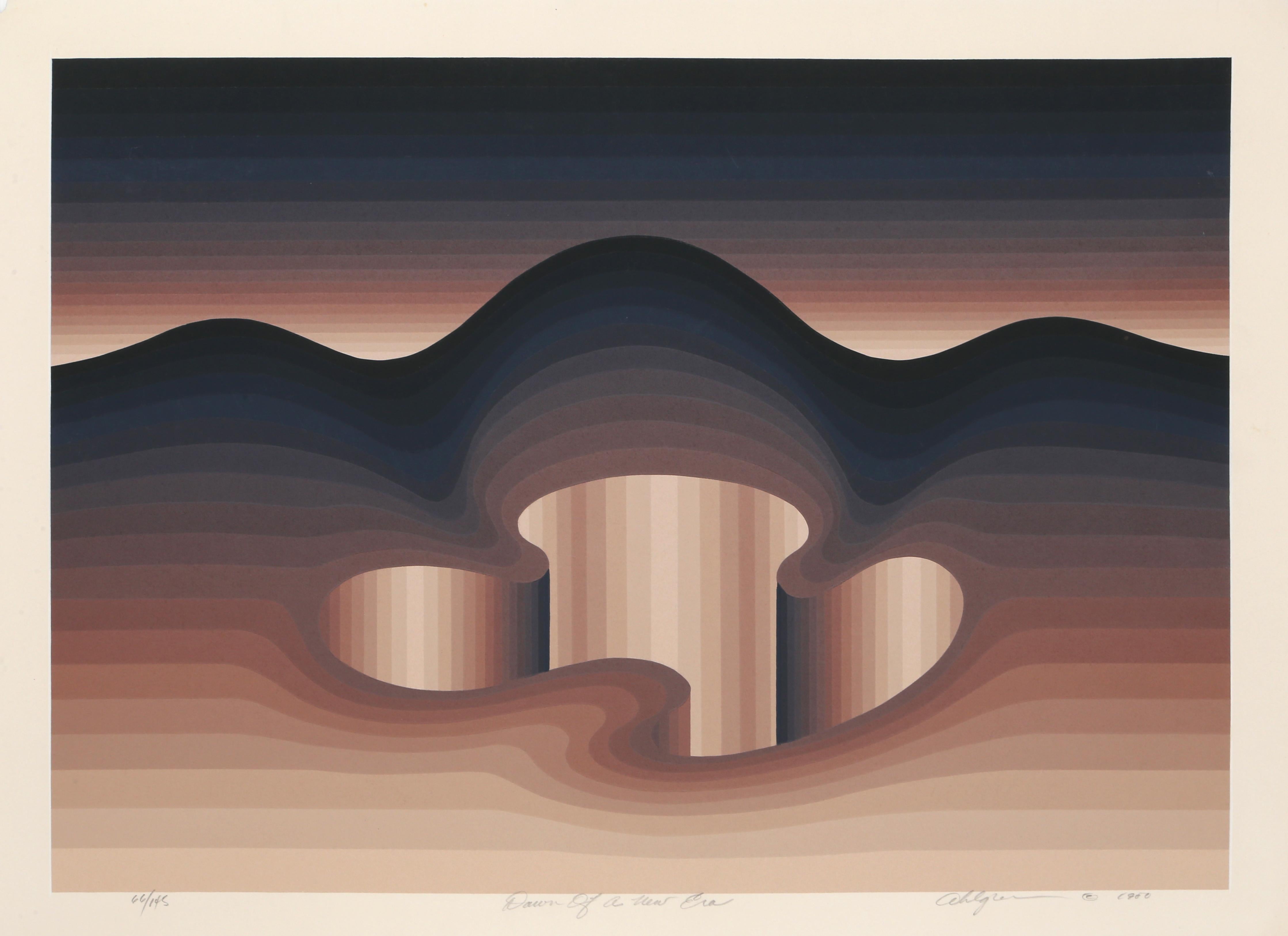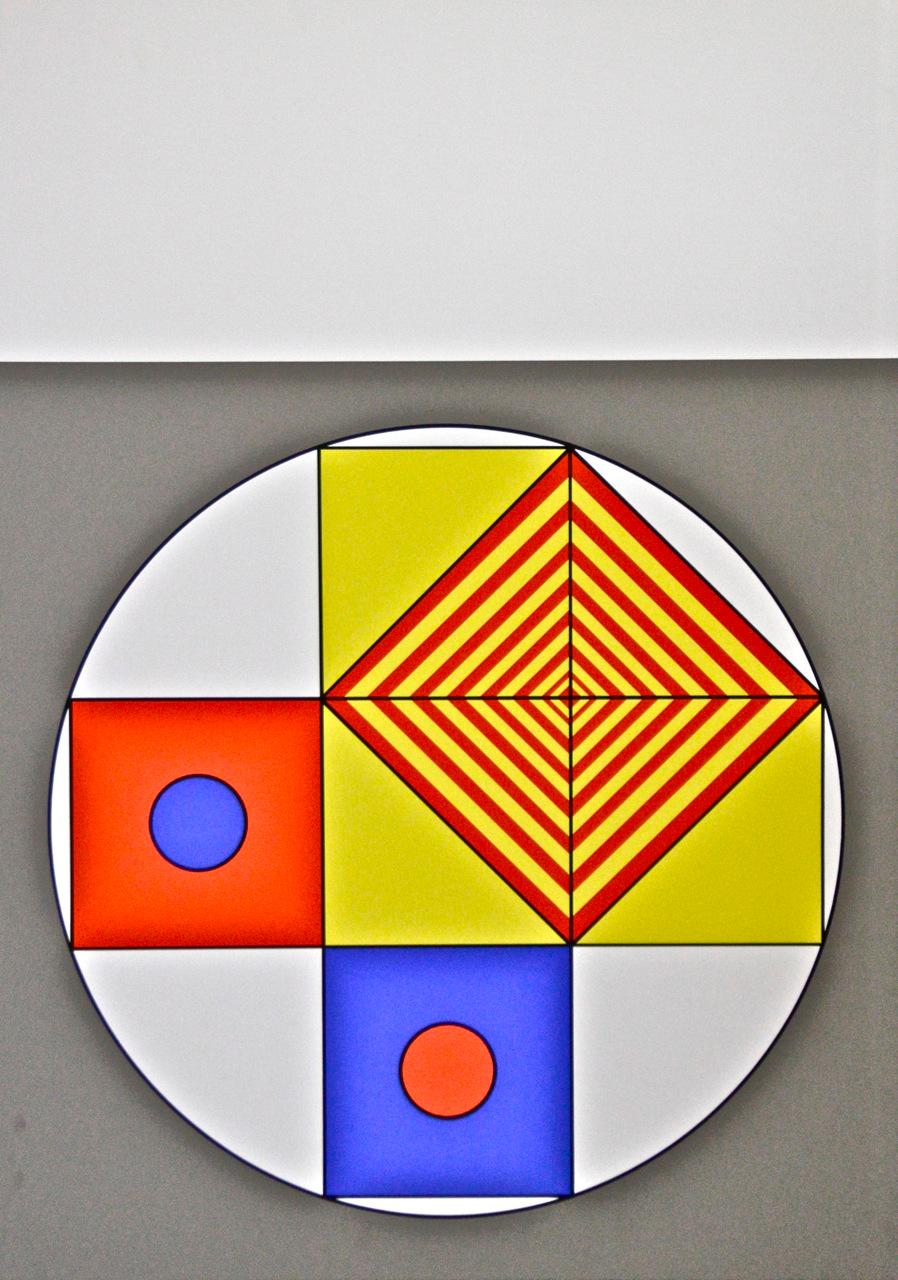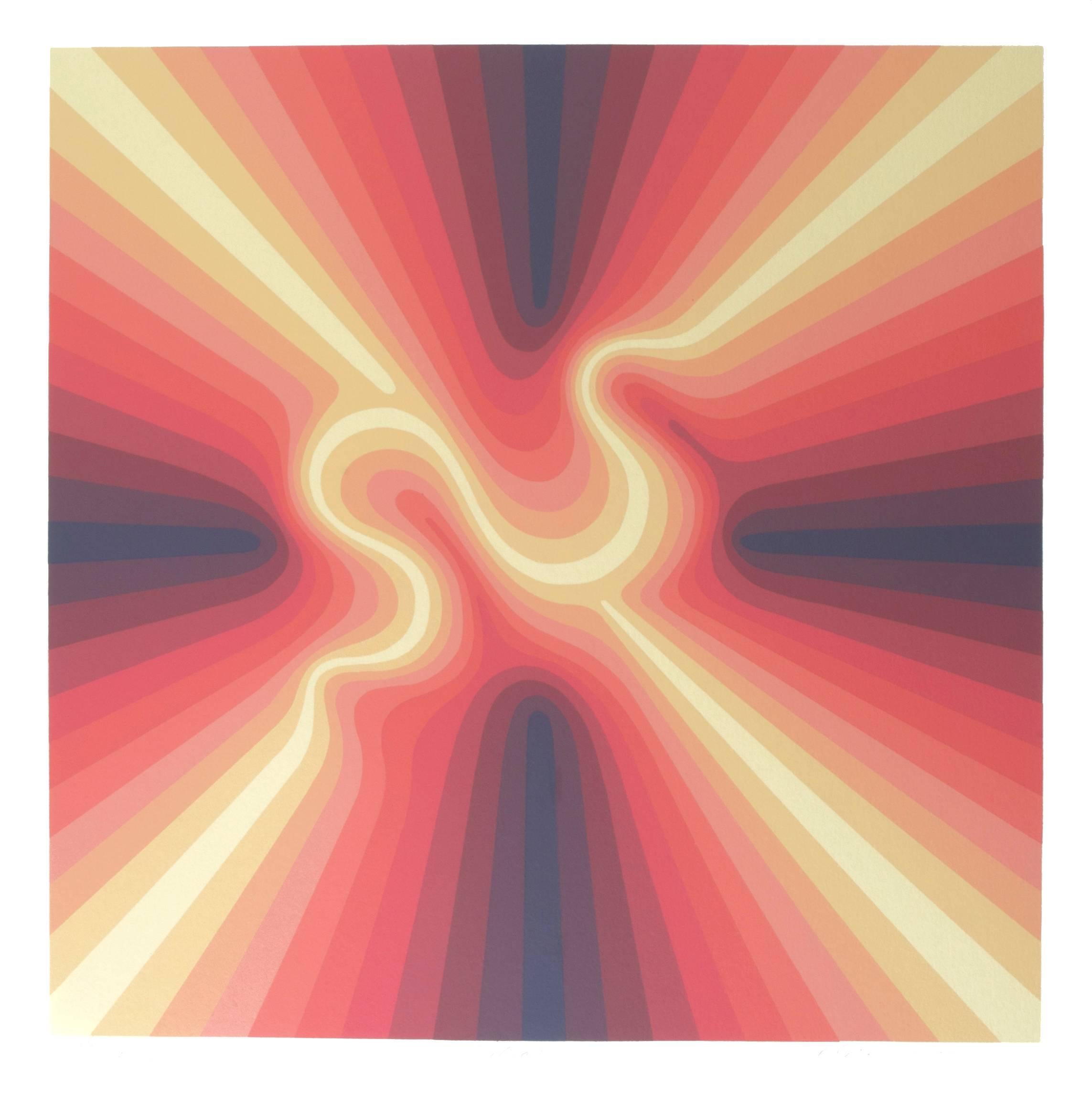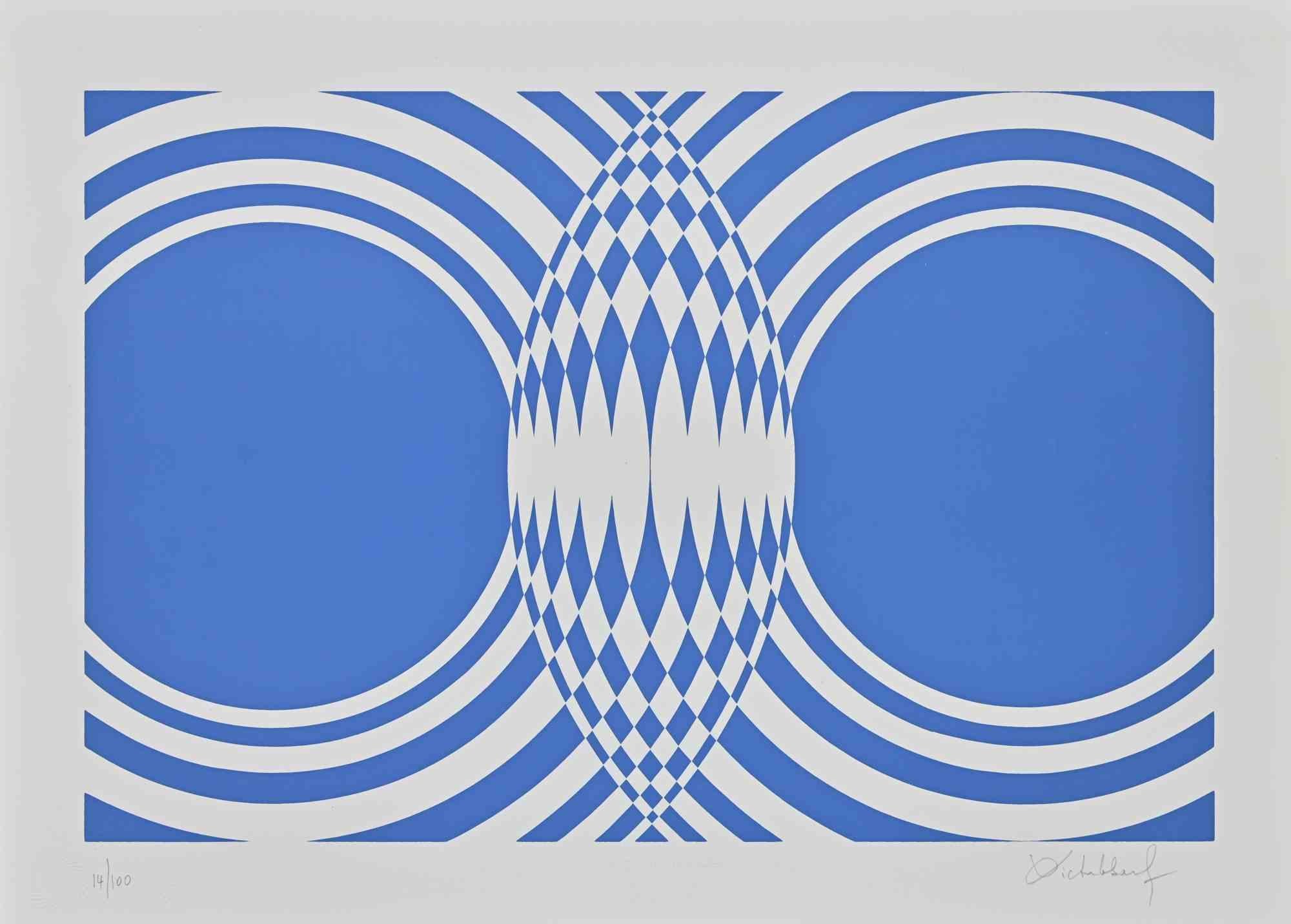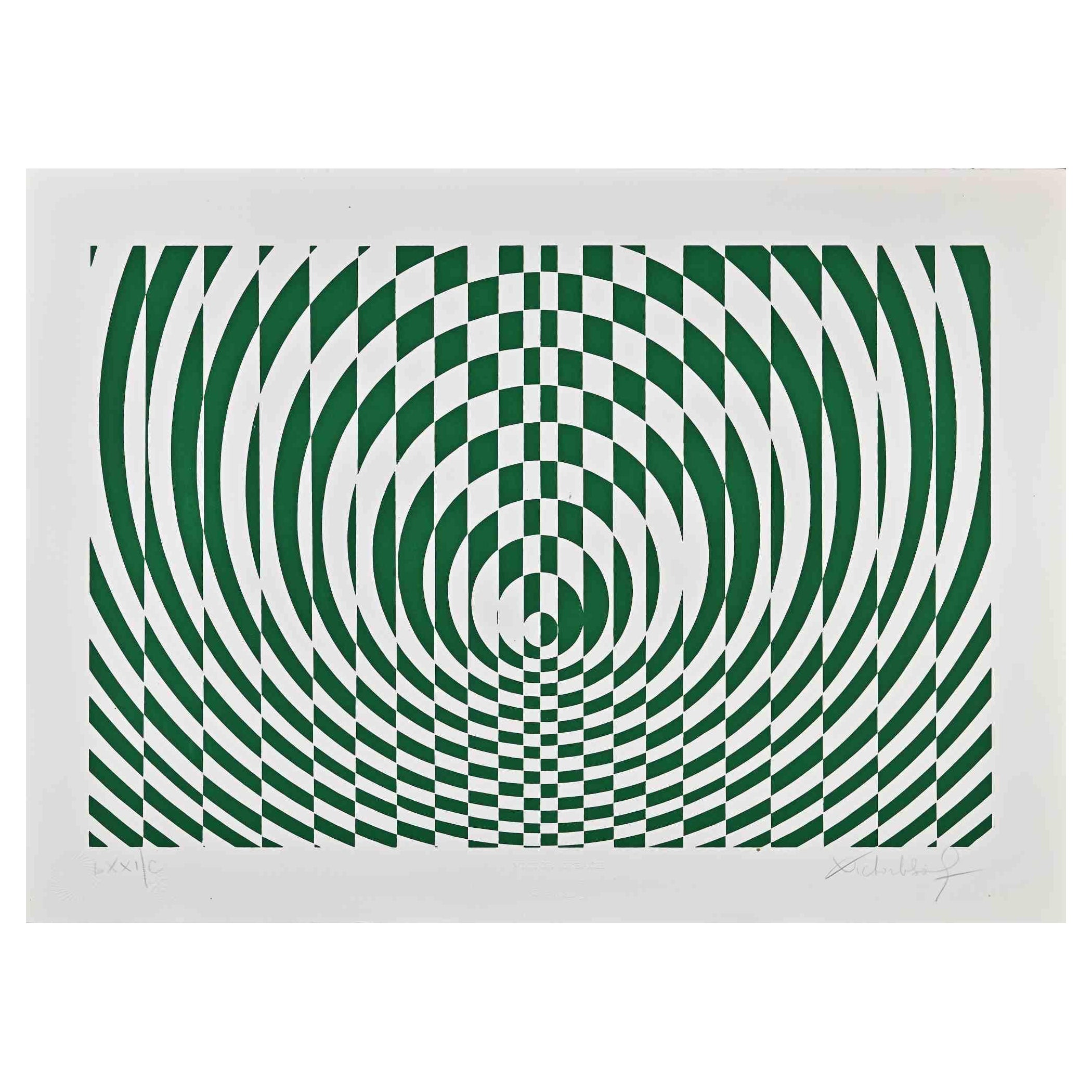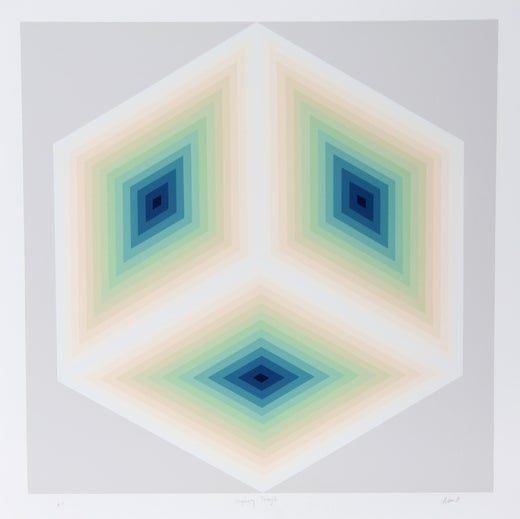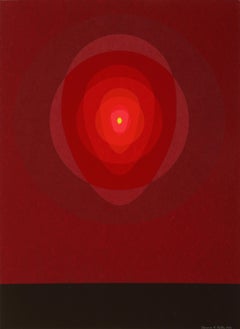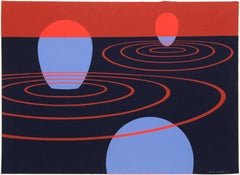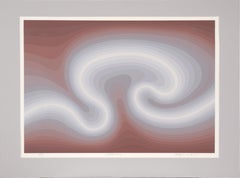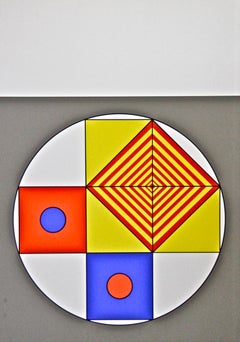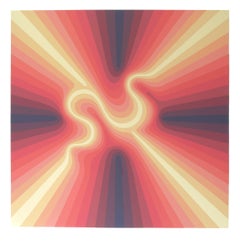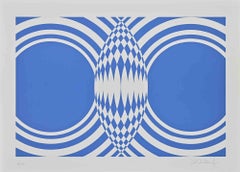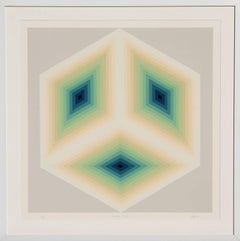
Imaginary Triangle, Framed OP Art Silkscreen by Jurgen Peters
View Similar Items
Want more images or videos?
Request additional images or videos from the seller
1 of 5
Jurgen PetersImaginary Triangle, Framed OP Art Silkscreen by Jurgen Peters1981
1981
Price:$700
$850List Price
About the Item
- Creator:Jurgen Peters (1936, German)
- Creation Year:1981
- Dimensions:Height: 31 in (78.74 cm)Width: 31 in (78.74 cm)Depth: 2 in (5.08 cm)
- Medium:
- Movement & Style:
- Period:
- Condition:
- Gallery Location:Long Island City, NY
- Reference Number:1stDibs: LU4661188663
Jurgen Peters
Jurgen Peters was born in 1936 in Hamburg Germany. He was a very well known optical artist in the 1970s, he was a known contemporary of Victor Vasarely, Yaacov Agam and Briget Riley.
About the Seller
4.9
Platinum Seller
Premium sellers with a 4.7+ rating and 24-hour response times
Established in 1979
1stDibs seller since 2014
3,087 sales on 1stDibs
Typical response time: 1 hour
Authenticity Guarantee
In the unlikely event there’s an issue with an item’s authenticity, contact us within 1 year for a full refund. DetailsMoney-Back Guarantee
If your item is not as described, is damaged in transit, or does not arrive, contact us within 7 days for a full refund. Details24-Hour Cancellation
You have a 24-hour grace period in which to reconsider your purchase, with no questions asked.Vetted Professional Sellers
Our world-class sellers must adhere to strict standards for service and quality, maintaining the integrity of our listings.Price-Match Guarantee
If you find that a seller listed the same item for a lower price elsewhere, we’ll match it.Trusted Global Delivery
Our best-in-class carrier network provides specialized shipping options worldwide, including custom delivery.More From This Seller
View AllRed Mandala, OP Art Geometric Abstract Screenprint by Clarence Holbrook Carter
By Clarence Holbrook Carter
Located in Long Island City, NY
Artist: Clarence Holbrook Carter, American (1904 - 2000)
Title: Red Mandala
Year: 1969
Medium: Screenprint on Japon, Signed and numbered in pencil
Edition: 75
Paper Size: 30 in. x 22...
Category
1960s Op Art Abstract Prints
Materials
Screen
Transection I, Silkscreen by Clarence Carter 1971
By Clarence Holbrook Carter
Located in Long Island City, NY
Artist: Clarence Holbrook Carter, American (1904 - 2000)
Title: Transection I
Year: 1971
Medium: Screenprint on Scintilla paper, signed and numbered in pencil
Edition: 75
Paper Size:...
Category
1970s Op Art Abstract Prints
Materials
Screen
Brown Mandala, Silkscreen by Clarence Holbrook Carter
By Clarence Holbrook Carter
Located in Long Island City, NY
Artist: Clarence Holbrook Carter, American (1904 - 2000)
Title: Brown Mandala
Year: 1969
Medium: Silkscreen on Scintilla paper, signed and numbered in pencil
Edition: 75
Paper Size: ...
Category
1960s Op Art Abstract Prints
Materials
Screen
Oscillation, Op Art Screenprint by Roy Ahlgren
By Roy Ahlgren
Located in Long Island City, NY
Artist: Roy Ahlgren, American (1927 - 2011)
Title: Oscillation
Year: circa 1977
Medium: Screenprint, signed and numbered in pencil
Edition: 150
Image Size: 18.25 x 25.75 inches
Size:...
Category
1980s Op Art Abstract Prints
Materials
Screen
Blue Arrow, Op Art Screenprint by Babe Shapiro
By Babe Shapiro
Located in Long Island City, NY
Babe Shapiro, American (1937 - 2016) - Blue Arrow, Year: circa 1970, Medium: Screenprint, signed and numbered in pencil, Edition: 31/90, Image Size: 25.75 x 30 inches, Size: 30.75 x ...
Category
1970s Op Art Abstract Prints
Materials
Screen
New York City Center of Music and Drama, Op Art Screen Print by Anuszkiewicz
By Richard Anuszkiewicz
Located in Long Island City, NY
Richard Anuszkiewicz, American (1930 - 2020) - New York City Center of Music and Drama, Year: 1968, Medium: Screenprint, signed, dated and numbered in pencil, Edition: 6/144, Image S...
Category
1960s Op Art Abstract Prints
Materials
Screen
You May Also Like
"Extrusive" Abstract Op-Art Serigraph
By Roy Ahlgren
Located in Soquel, CA
Beautiful multi color serigraph by Roy Ahlgren (American, 1927-2011). This piece transitions from a dark magenta to a silvery blue, passing through warm grey shades in between. The s...
Category
1980s Op Art Abstract Prints
Materials
Ink, Laid Paper, Screen
$1,170 Sale Price
35% Off
Composition VII - Original Screen Print by Franco Cannilla - 1971
By Franco Cannilla
Located in Roma, IT
Composition VII is an original serigraph realized by Franco Cannilla in 1971.
The artwork is hand-signed in pen by the artist. Edition of 40 prints.
...
Category
1970s Op Art Abstract Prints
Materials
Screen
Pulsar
By Roy Ahlgren
Located in Fairlawn, OH
11 value silkscreen print
Signed, dated, titled and numbered in pencil by the artist.
Edition of 150, plus 20 AP's as is here AP XV/XX.
Provenance:
Estate of the Artist
By dece...
Category
1980s Op Art Abstract Prints
Materials
Screen
Blue Composition - Screen Print by Victor Debach - 1970s
By Victor Debach
Located in Roma, IT
Blue Composition is an original contemporary artwork realized by Victor Debach in the 1970s.
Mixed colored screen print on paper.
Hand signed on the lower right margin.
Numbered o...
Category
1970s Op Art Abstract Prints
Materials
Screen
Optical Green Composition - Original Screen Print by Victor Debach - 1970s
By Victor Debach
Located in Roma, IT
Optical green composition is an original contemporary artwork realized by Victor Debach in the 1970s.
Mixed colored serigraph on paper.
Hand signed on the lower right margin.
Num...
Category
1970s Op Art Abstract Prints
Materials
Screen
Lattice - Screen Print by V. Vasarely - 1980s
By Victor Vasarely
Located in Roma, IT
Lattice is a contemporary artwork realized by Victor Vasarely (1906-1997) in 1978.
Silkscreen in colors on wove paper.
Hand signed on the lower right.
Includes frame.
Category
1980s Op Art Abstract Prints
Materials
Screen
Recently Viewed
View AllRead More
Romare Bearden’s Humanity Infuses His Bright, Bold Art
Through collage, painting and printmaking, the artist foregrounded Black life in America in revolutionary new ways.
Chryssa’s 1962 Neon Sculpture Was Way ahead of the Art-World Curve
By working with lettering, neon and Pop imagery, Chryssa pioneered several postmodern themes at a time when most male artists detested commercial mediums.
More Ways To Browse
Jurgen Peters Serigraph
Van Craig
Canadian Inuit Art
Ed Ruscha Lithograph
Richard Serra Prints
Walasse Ting Lithograph
Jasper Johns Whitney
Kenneth Noland Lithograph
Abstract Bronze Sculpture Netherlands
Frank Stella Lithograph
Joan Miro Mirror
Miro With Coa
Outdoor Kinetic
Victor Vasarely Lithograph Signed
August Macke
Anuszkiewicz Signed
Daniel Moore
Jesus Rafael Soto
